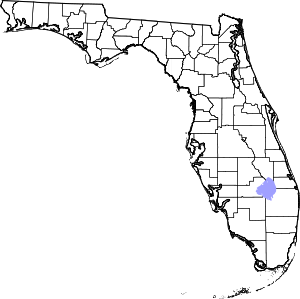Nature Coast: Difference between revisions
No edit summary |
Cyberbot II (talk | contribs) Rescuing 1 sources, flagging 0 as dead, and archiving 1 sources. #IABot |
||
| Line 1: | Line 1: | ||
{{no footnotes|date=October 2014}} |
{{no footnotes|date=October 2014}} |
||
[[Image:Map of Florida highlighting Nature Coast.svg|right|thumb|300px|Map of Florida's Nature Coast←''Map hasn't been colored in to show the counties.'' 15 Mar 2015.]] |
[[Image:Map of Florida highlighting Nature Coast.svg|right|thumb|300px|Map of Florida's Nature Coast←''Map hasn't been colored in to show the counties.'' 15 Mar 2015.]] |
||
The '''Nature Coast''' is a [[List of regions of the United States|region]] of the [[U.S. state]] of [[Florida]]. The [[Nature Coast State Trail]] is officially designated as part of Florida’s Statewide System of Greenways and Trails.<ref name=nature>{{cite web|title=Nature Coast State Trail|url=http://www.dep.state.fl.us/gwt/guide/regions/north/trails/nature_coast_trail.htm|publisher=State of Florida|accessdate=May 18, 2012 |
The '''Nature Coast''' is a [[List of regions of the United States|region]] of the [[U.S. state]] of [[Florida]]. The [[Nature Coast State Trail]] is officially designated as part of Florida’s Statewide System of Greenways and Trails.<ref name=nature>{{cite web|title=Nature Coast State Trail |url=http://www.dep.state.fl.us/gwt/guide/regions/north/trails/nature_coast_trail.htm |publisher=State of Florida |accessdate=May 18, 2012 |deadurl=yes |archiveurl=https://web.archive.org/20120515231314/http://www.dep.state.fl.us/gwt/guide/regions/north/trails/nature_coast_trail.htm |archivedate=May 15, 2012 }}</ref> It comprises the inside curve or [[Big Bend (Florida)|Big Bend]] area of the western coast of the state and encompasses [[Citrus County, Florida|Citrus]], [[Dixie County, Florida|Dixie]], [[Hernando County, Florida|Hernando]], [[Jefferson County, Florida|Jefferson]], [[Pasco County, Florida|Pasco]], [[Levy County, Florida|Levy]], [[Taylor County, Florida|Taylor]], and [[Wakulla County, Florida|Wakulla]] counties. This region of Florida is culturally partially southern, with the [[Deep South]] culture extending to Levy County. |
||
The lower southern end (Pasco, Hernando, and Citrus County) are often considered part of the [[Tampa Bay Area]]. |
The lower southern end (Pasco, Hernando, and Citrus County) are often considered part of the [[Tampa Bay Area]]. |
||
Revision as of 23:06, 9 January 2016
This article includes a list of references, related reading, or external links, but its sources remain unclear because it lacks inline citations. (October 2014) |

The Nature Coast is a region of the U.S. state of Florida. The Nature Coast State Trail is officially designated as part of Florida’s Statewide System of Greenways and Trails.[1] It comprises the inside curve or Big Bend area of the western coast of the state and encompasses Citrus, Dixie, Hernando, Jefferson, Pasco, Levy, Taylor, and Wakulla counties. This region of Florida is culturally partially southern, with the Deep South culture extending to Levy County.
The lower southern end (Pasco, Hernando, and Citrus County) are often considered part of the Tampa Bay Area.
The Nature Coast covers eight different counties and part of one county (Dunnellon is a part of Marion County). It encompasses 980,000 acres (4,000 km2).
The name "Nature Coast" was devised in 1991 as part of a marketing campaign to attract vacationers to the nine county area. The name eventually began to be used locally, and describes the area formally known as the "Big Bend" of Florida.[2][dead link]
Activities common in this area include hunting, fishing, boating, bird watching and nature hiking. Snorkeling spots are found in the rivers along the Nature Coast. Diving and manatee tours are available, predominantly in areas such as Crystal River, Homosassa and Homosassa Springs.
The Naturecoast is home to wildlife including deer, wild pigs, roseate spoonbills, alligators, raccoons, opossums, snakes, great blue herons, egrets, turtles and at least 19 endangered species.
There are also 50 golf courses in the area.
See also
Citrus
- Crystal River Archaeological State Park
- Crystal River National Wildlife Refuge
- Crystal River Preserve State Park
- Hitters Hall of Fame
- Homosassa Springs Wildlife State Park
- Lake Rousseau
- Ted Williams Baseball Museum
- Withlacoochee State Trail
- Yulee Sugar Mill Ruins State Historic Site
Hernando
- The Heritage Museum
- Weeki Wachee Springs
- Nature Coast Botanical Gardens
Jefferson
Levy
- Cedar Key Museum State Park
- Cedar Key Scrub State Reserve
- Cedar Keys National Wildlife Refuge
- Fanning Springs State Park
- Manatee Springs State Park
- Waccasassa Bay Preserve State Park
- Goethe State Forest
- Devil's Hammock Wildlife Management Area
Marion
Pasco
Taylor
Wakulla
- Bradwell Bay Wilderness
- Edward Ball Wakulla Springs State Park
- Ochlockonee River State Park
- San Marcos de Apalache Historic State Park
- St. Marks National Wildlife Refuge
- Tallahassee-St. Marks Historic Railroad Trail State Park
See also
- Florida Suncoast - to the south
- Forgotten Coast - to the north and west
References
- ^ "Nature Coast State Trail". State of Florida. Archived from the original on May 15, 2012. Retrieved May 18, 2012.
{{cite web}}: Unknown parameter|deadurl=ignored (|url-status=suggested) (help) - ^ St. Petersburg Times article, St. Petersburg Times - Feb 23, 1994
